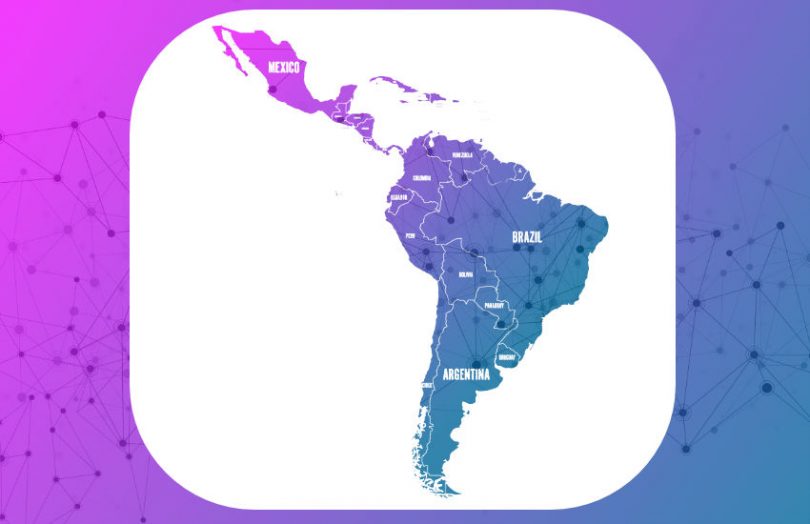Ledger Insights is a media partner of the Hyperledger Global Forum, which starts in Dublin on Monday and will also be live streamed. One of the keynotes includes leaders from LACChain and Alastria on public infrastructure networks.
IDB Lab highlights. It:
- initiated LACChain, the public permissioned network with 90+ organizations running nodes
- was involved in two ground breaking tokenized bond issuances
- plans to tokenize money for development bank disbursements
- wants to support more grassroots blockchain applications that impact everyday lives.
IDB Lab, the innovation lab of the Inter-American Development Bank (IDB), has been a blockchain trailblazer in Latin America (LATAM) and the Caribbean by founding LACChain, the public permissioned blockchain network based on Hyperledger Besu.
Irene Arias Hofman, IDB Lab’s CEO, knows a thing or two about collaborative networks. However, there have been a few bumps on the road in IDB Lab’s endeavors using blockchain in the capital markets, which the Lab managed to resolve.
The rocky road to blockchain bond innovation
In July, it announced a groundbreaking Spanish blockchain bond issuance, in which IDB issued a $10 million digital security listed on the Spanish market BME and sold to private market participants. Rather than a sandbox event, this was a regulated tokenized bond on the main market settled with tokenized money. It turns out that at an advanced stage in the project, a key player was replaced.
Talking about the reasons, “It was the first time that a lot of the counterparties were playing their roles,” said Arias Hofman. But she added, “Every party has to be willing to adapt.”
She lauded the final set of project participants. “It’s really important to have full commitment from the top of the institutions,” added Arias Hofman. Someone at the Spanish bank BBVA acted as the champion to push the project forward. BBVA took on the roles of tokenizing the money used for payment and acting as the digital custodian, digital structurer, and active book-runner for the bond issuance. Citi was the agent, and ioBuilders was the technology partner.
During the project, BME/Iberclear went through a merger process with the SIX stock exchange. When they asked SIX about continuing the project, the new owners said they had something great and backed them to continue. That’s not surprising as SIX is very active in the blockchain tokenization sector, having launched the SIX Digital Exchange.
The key Spanish participants are all active in Latin America, including the legal adviser, making the solution portable.
Colombian blockchain bond
In another capital markest first, in late August, Davivienda Bank issued a COP$110 million ($25,000) Colombian blockchain bond as a pilot in the country’s regulatory sandbox. The project included involvement from the central bank and securities regulator, with IDB Invest purchasing the bond, which was issued on the LACChain blockchain.
Apart from the payment, the entire bond issuance process was executed on the blockchain. That included all the procedures with the National Registry of Securities and Issuers as well as the issuance, trading and compliance. The next bond is expected to settle using tokenized money.
Compared to the Spanish version, this was a pilot and far more controlled. It was in a sandbox, was a small amount, and wasn’t offered to the market. However, IDB expects it to be fully commercialized so private investors can use it.
The blockchain roadmap
Regarding the next steps, IDB wants to offer a tokenized bond solution to financial institutions. It has a bit of an in-house advantage.
One of IDB’s three divisions is IDB Invest which has 500 private clients made up of financial institutions, infrastructure firms and real estate companies. It does $7 – $8 billion in issuances annually, with many of them thematic bonds. “We have almost a captive market to offer this option,” said Aria Hofman. It hopes to start with countries that have digitally-savvy regulators.
Digital money
The second part of the roadmap is to use blockchain for digital payments, and in particular, for its own smart contract disbursements. As a development bank, the organization makes billions of payments annually.
It sees social transfers running on the blockchain as a key opportunity, including helping farmers.
In line with these efforts, last year, the development bank ran a proof of concept with Citi for tokenized money for cross border remittances.
However, Arias Hofman highlighted that it’s one thing to reduce the cost of remittances, but the process needs to work end-to-end in a very cash-driven society, especially in rural areas where IDB is active.
If someone receives a digital payment, they need to be able to convert it to cash easily. So a key push in the future is to target the unbanked and grow use cases that have a social impact.
Talking about digital money, with an organization of IDB’s scale, one has to wonder whether it’s working on central bank digital currency (CBDC) projects. Arias Hofman implied that IDB was not. “A CBDC by a central bank could be ideal. But in LATAM and the Caribbean, even though a lot of them are investigating it, they are still a bit reluctant. So a stablecoin by a commercial bank can work as well.” She suggested a third option was to use a tokenized solution from the likes of Visa or Mastercard.
LACChain
Apart from its capital markets and digital payments efforts, IDB’s key blockchain accomplishment is founding the LACChain blockchain network. In February, the network’s governance transitioned to an independent structure, LACNet.
Currently, 91 organizations are involved with 178 blockchain nodes running across the mainnet and testnet. Most other public permissioned blockchain networks are far less decentralized. For example, Hedera has 26 governance organizations and Klaytn has 36 members.
Sixty-four solutions have already been deployed on the network that uses Hyperledger Besu. These include applications in agriculture, health, education and other industries. Several have deployed digital identity and verifiable credentials for vaccination certificates, education credentials and other purposes.
But there’s a big difference between these consumer-focused applications, which have a more concrete benefit to people’s daily lives, versus the capital markets solutions. “The beauty of that (capital markets) is that we can (execute) at a very big scale immediately,” said Arias Hofman. “But it’s harder to see the impact of that on the ground. And these 64 solutions are an amazing platform to grow from.”







